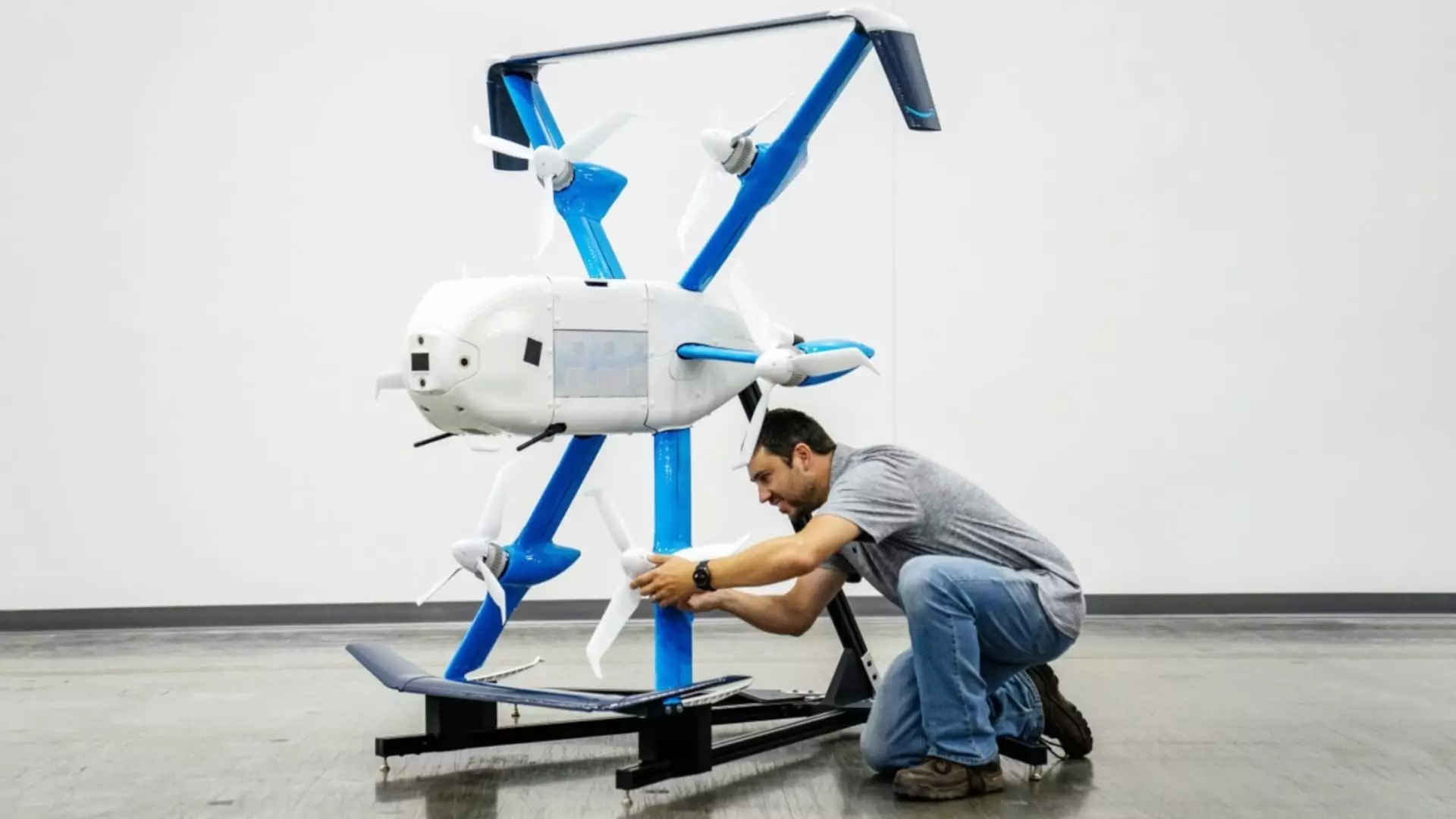Amazon has recently made significant strides in its pursuit of revolutionizing package delivery through drone technology. With the recent regulatory nod for its new MK30 drone, the company is seemingly closer to realizing its long-standing ambitions for its Prime Air delivery service. However, despite this progress, several challenges related to public concerns, operational execution, and regulatory compliance remain.
The approval from the Federal Aviation Administration (FAA) marks a critical milestone for Amazon, allowing it to operate its latest drone model—the MK30. This lighter, quieter drone represents a significant upgrade from its predecessors, boasting a flight range that is double that of earlier versions and enhanced capabilities, such as operation in light rain. Such innovations demonstrate Amazon’s commitment to refining its technology and creating an efficient delivery network that could transform the logistics landscape.
Amazon’s announcement regarding the commencement of operations near Phoenix, Arizona, indicates the company’s strategy to integrate these drones into its existing logistical framework effectively. The idea of “beyond visual line of sight” operations hints at a vision that extends far beyond traditional delivery methods, a move geared towards creating a seamless, rapid delivery solution that meets the burgeoning demands for quicker services. However, it remains crucial to assess whether these advancements will translate into overall success.
Despite the optimistic outlook surrounding the MK30, Amazon’s drone delivery program has not been without its complications. The ambition behind Prime Air was first shared by Jeff Bezos over a decade ago, with aspirations that it would roll out in five years. Fast forward to now, and the timeline for implementation has vastly lagged behind, plagued by regulatory roadblocks, missed deadlines, and a series of corporate restructuring that included layoffs and leadership changes. The loss of key personnel, particularly regarding relationships with federal regulators, could undoubtedly inhibit progress unless the leadership can effectively bridge these gaps.
Moreover, the operational challenges extend beyond the corporate corridors of Amazon and into the communities they serve. Local opposition has cropped up in certain testing locations, with residents raising concerns about the noise pollution generated by drone operations. Such grassroots objections can significantly hinder Amazon’s ambitions if policymakers and stakeholders prioritize community welfare over corporate aspirations.
Amazon is not alone in this quest for drone delivery supremacy. Competitors like Wing, a Google-affiliated initiative, as well as established firms including UPS and Walmart, are also making strides in drone technology. Each of these companies adds competitive pressure, illustrating that the race to establish a robust drone delivery service is more competitive than ever. The evolving field sees numerous startups, including Zipline and Matternet, also vying for a slice of this lucrative market, leading to a diverse array of strategies and technological innovations.
Given the accelerating pace of competition in the drone delivery landscape, Amazon’s venture faces not only the immediate hurdles of regulatory approval and community acceptance but also the pressure of maintaining relevancy in a swiftly evolving technological environment.
The road ahead for Amazon’s drone delivery program appears incredibly promising yet fraught with complexities. The FAA’s recent approval has opened the door to further trials and potential increases in operational scope, but this progress must be carefully monitored against logistical prowess and public acceptance. Amazon’s ability to adapt to community feedback, implications of regulatory changes, and competitive maneuvers in this space will be crucial to its long-term success.
While Amazon’s vision of drone delivery looms closer on the horizon, the interplay of technological innovation, regulatory foresight, and community engagement will be pivotal in shaping the future of Prime Air. As the tech giant navigates the multifaceted challenges ahead, the industry will undoubtedly be watching closely to see if it can finally fulfill the expectations set a decade ago.

